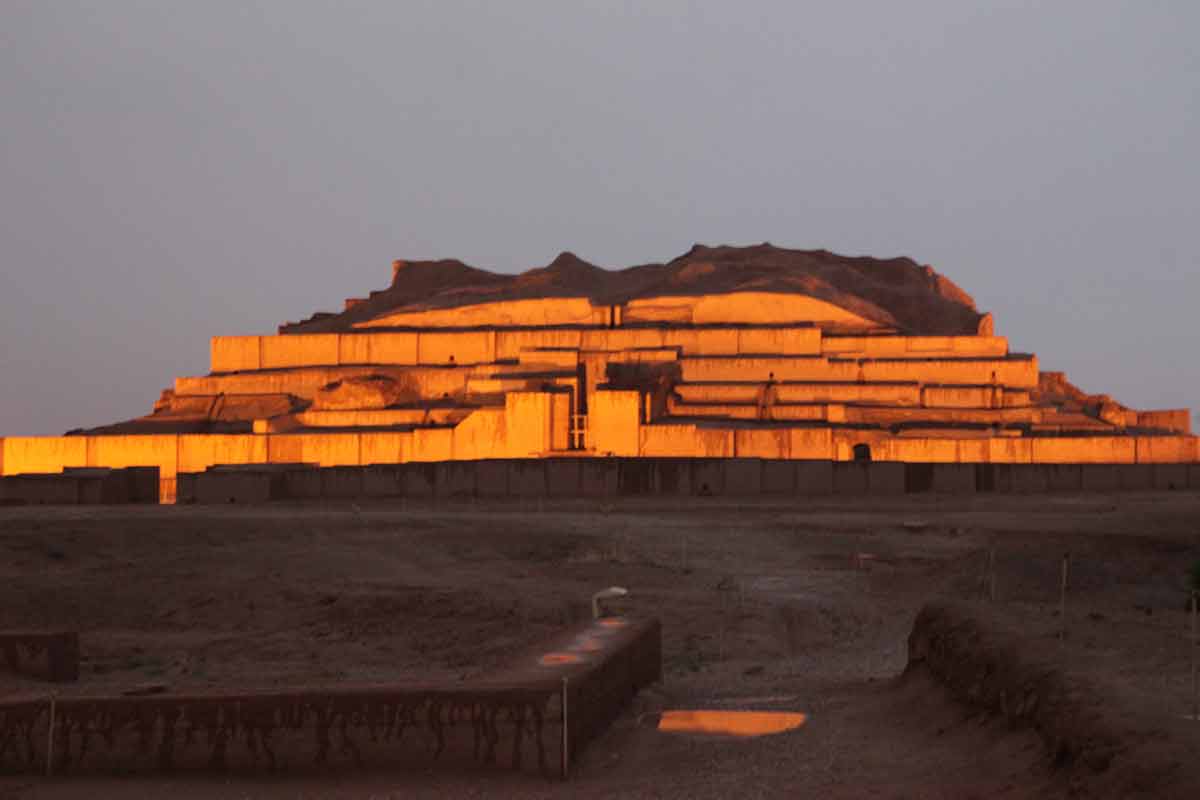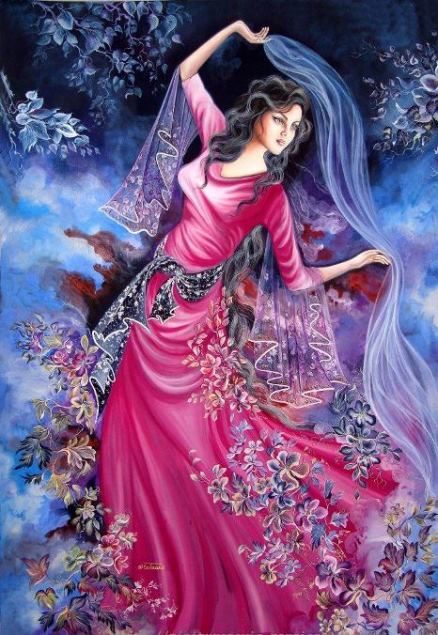


What makes Iran different from other Islamic countries is that the Persian culture that occurred before the Islamic conquests had ended a thousand years before the Arabs arrived. Islamic art in Iran tends to be non-representational, derivative and stylized over the figurative and the true-to-life. Geometrical shapes and complex floral patterns are especially popular in Iranian Art. Tradiotionally, Islam has forbidden the representation of living beings. In Sunni Islamic counties you seldom see an image that represents a living being, but Islamic Art often surprises people with its portraits and images of animals.
Carpets
The best-known Iranian cultural export is the Persian carpet. Carpets mean much more than a floor covering to Persians. A Persian carpet is a display of wealth, an investment, an integral part of religious and cultural festivals, and is used in everyday life.

History
The oldest surviving carpet is the ‘pazyyk’ rug. It is believed to date from the 5th century BC and was discovered inn the frozen tomb of a Scythian prince in Siberia in 1948. While the rug’s exact origins are unknown, some scholars believe it is the style of carpets found in the achaemenid court.
Persian carpets are still an important industry in Iran. According to the National Iranian Carpet Center, more than 5 million Iranians work in the industry and carpets are the country’s largest Non-oil export by value. Carpet trade relies on the prestige evoked by the term ‘Persian carpet’, but maintaining the ‘brand’ is becoming difficult with cheaper version of ‘Persian carpets’ being made in India And Pakistan. Furthermore, fewer young Iranians are interested in learning to weave. Expect the cost of making genuine handmade rugs – and their price in the bazaar – to rise steadily.
Type of carpets & rugs
Most people use the words ‘carpet‘ and ‘rug‘ interchangeably. The difference between the two words is that a carpet is bigger than a rug. Anything longer than about 2m is considered a carpet, while anything shorter is a rug. As well as carpets, which are made using thousands or even millions of knots, you will also find kilims. Kilims are thinner, flat-woven mats without knots and no pile. Carpets come in a huge variety of designs. Some are inspired by religion, such as prayer rugs which usually display an arch representing the main arch of the Al Haram mosque in Mecca and perhaps a lamp symbolic of the statement in Quran that "Allah is the light of heaven".
Other common designs are stylized trees of life and hunting scenes and pictorial depictions of epic poems. They may also be inspired by whatever surrounds the weaver, e.g. trees, animals and flowers, particularly the lotus, rose and chrysanthemum. Gardens are commonly depicted on carpets too. In the case of a tribal nomad, a garden carpet will be the only garden the weaver will ever on.
In general, these designs are consider either ‘tribal ‘or ‘city’ carpets. Tribal designs vary greatly depending on their origin, but are typically less ornate. ‘City carpets’ are the classic Persian rugs you’ll have seen across the world, usually highly ornate floral designs around one or more medallions.
Most Iranians want to own hand woven city carpets. If you can’t afford a hand woven city carpet, buy a machine-made city carpet, as any city carpet is far better than a tribal carpet. Tribal carpets are believed to be the work of peasants.
Persian Architecture
Listed chronologically
Chogha Zanbil: A huge brick Ziggurat from before the 7th century BC (Khozestan Province).

Perspolis: The full glory of the achaemenid period in one place (Fars Province).

Ardeshirs Place: South of Shiraz, Ardeshir’s monumental palace was one of the earliest Sassanian architectural triumphs and the most impressive of what’s left.
Mil-e Gonbad: A soaring, almost unfeasibly bold 11th –century brick tower (Golestan Province).
Jame Mosque: Esfahan’s congregational mosque is the finest remaining Seljuk building.
Azim-e Gohar Shad Mosque (Razavi Khorasan Province) and blue (Kabud) Mosque (East Azerbayjan Province): Timurid architecture at its finest.
Imam sq: The lasting glory of the Safavid is enshrined in this grand square, containing arguably the greatest concentration of Islamic buildings anywhere on earth (Esfahan Province).
Golestan Palace (Tehran Province) and Takieh Mo’aven ol-molk (Kermanshah Province): The finest examples of overblown Qajar style.
Miniatures
The Persian miniature-painting (minyaturha) tradition began after the Mongol invasion, and was influenced by Artisans from China that were brought to the royal court. It reached its peak during the 15th and 16th centuries. Later artists from eastern Iran, who had studied under the great Mohammad in Herat (now in Afghanistan), also started to influence this art form.

Persian miniature paintings are now famous throughout the world. A well-done miniature painting is intricate and very detailed. Many of the paintings feature courting couples in traditional dress (usually figures from popular poetry), polo matches and hunting scenes. Some of the best modern miniatures come from Esfahan, where the tourist market keeps hundreds of miniaturists busy.
Folk
Traditional music is heard among ethnic minorities, such as the Turkmen in northern Iran. Azaries enjoy a unique style of music, often based around a love song. The Kurds have a distinctively rhythmic music based mainly around the lute and their own versions of epic songs, called badrs. Folk music employs most of the instruments discussed in the following passage, with regional variations. The demam, a type of bagpipe, is popular along the Persian Gulf. The music of Sistan va Baluchestan is understandably similar to that of Pakistan and usually uses instruments such as the Tamboorak (similar to the Pakistani Tambura, a type of harmonium). Most of the lyrics of traditional music are about Islam. Some of the lyrics also explore love or ancient military victories.

Tar – a six – string instrument, usually plucked
Setar – similar to the tar but with four strings
Nay – generic name for various types of flute
Sorna – similar to an oboe
Kamancheh – a kind of four – stringed viola played like a cello
Daf and daryereh – different sizes of outsized tambourine
Santur – dulcimer played with delicate wooden mallets
Tombak – vase-shaped drum with a skin at the wide end
Dohol and zarb – large and small drums respectively
The great Iranian poets
There have been many great Iranian poets. The poets of Iran are often credited with preserving the Persian language and culture during times of occupation. Streets, squares, hotels, and chaykhanehs (teahouses) are often named after famous poets. Several mausoleums are named after famous poets. Poets Ferdosi and Omar Khayyam are buried in huge (separate) gardens near Mashhad, and sa’di and Hafez have mausoleum complexes in Shiraz; are all popular pilgrimage sites.